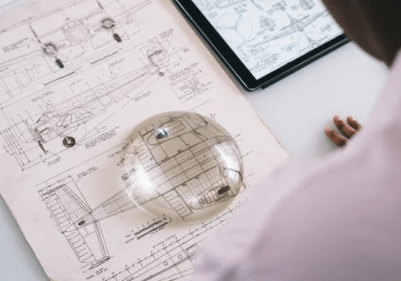
What Does It Mean When You See A Flashing Check Engine?
Drivers don’t get to see a flashing check engine light that often unless there’s a looming problem with the car’s engine. Since this is a rare occurrence, not everyone knows what a flashing check engine light means. This article can help you learn the things you need to know about a flashing check engine light.
You might be wondering why your check engine light is flashing. Seeing the check engine light flash is a rare occurrence compared to other car symbols that light up on your dashboard display. The reason might be alarming, but there’s nothing to fear as long as you take immediate action upon seeing the warning sign.
There are several reasons why your check engine light might flash. Here’s a guide to help you understand the why and what you need to do when you see your check engine light blinking.
Overview
Whenever you start the car, the check engine light always comes on, then turns off within 6 seconds when there’s no problem detected. When something does go wrong, your car’s electronic engine-management system (EMS) triggers the check engine light.
The “check engine” light is a warning symbol that lights up when a malfunction or an error has been detected within your engine component or system management. Usually, you will see 2 variations of warning lights, steady and flashing, depending on the issue. A steady check engine light indicates a minor issue, while a flashing check engine light indicates a severe issue.
The last thing you might want to see on your car’s dashboard display is a blinking check engine light.
You should never ignore a flashing signal, as it indicates a severe issue with your car’s engine. The experience might be distressing for you, but irreversible damage can still be prevented.
Avoid driving a longer distance if your check engine light is flashing because it can do more damage to your vehicle. In extreme cases, you risk yourself and other passengers in your car, and others on the road, to a potential danger such as fire.
Pulling over and calling a tow service is the smartest response you can make when faced with this kind of incident.
Why is your check engine light flashing?
Your car’s electronic engine-management system (EMS) consists of an Engine Control Unit (ECU) and different sub-systems and sensors that collect, analyze, and process data that it needs for calculating and delivering the air-fuel mixture needed for the ignition. In the event that a malfunction is detected, the check engine light will pop up to alert you of the issue.

When the light is on, the ECU stores fault codes that can be read and interpreted using an On-Board-Diagnostics like the Dinan OBD2 Scan Tool, for example. These generated fault codes can be used by your mechanic in determining repairs and parts that need to be fixed to resolve the issue.
There are several reasons why your check engine light is flashing. You might want to check and diagnose your car for the following problem:
- Ignition problem
- Faulty oxygen sensor
- Crankshaft and Injector Issues
- engine control unit defect.
- Exhaust Issue
- Bad Coils/Spark Plugs
- An issue with exhaust gas recirculation
- Damage to the catalytic converter
- Gas/Fuel Cap Faulty or Loose
- A Faulty Mass Airflow (MAF) Sensor
In most cases, a flashing check engine light indicates potential engine misfires. A misfire occurs whenever a cylinder fails to supply the right amount of power to the engine for the car to run properly.
In some cases, a misfire happens when the engine is dumping unburned fuel into your vehicle’s exhaust system. The excessive amount of unburned fuel can cause a rapid rise in the temperature of the catalytic converter, which may result in overheating.
This catalytic converter is responsible for breaking the pollutant gases apart and converting them into safe gases that are harmlessly blown out into the air. When the catalytic converter is compromised, it leads to sluggish engine performance and possible engine shutdown.
Why is your engine misfiring?
Here are three commonly known reasons why your engine misfires:
- Ignition Problems
This is the most common cause of an engine misfire. Spark plugs and ignition coils are most likely to cause the misfire, as these parts do wear over time and fail. They cause problems such as improper ignition timing and plugs failing to provide a spark to the cylinders. When the engine misfires, defects in the ignition system are the least expensive to repair.
- Fuel Mixture Issues
A problem in the fuel mixture can cause your engine to run too lean or too rich. The engine runs lean when the air-to-fuel mixture is too light. When there’s a higher concentration of the air-to-fuel mixture, the fuel in the ignition chamber is ignited with too much air or too little fuel, which makes your engine run on less fuel than it needs. This may cause problems such as trouble starting your car, sluggish acceleration, and even backfiring.
The engine is considered to be running “rich” when there’s too much fuel and not enough air. A rich fuel mixture tends to generate more power because of the excess fuel. It can degrade the catalytic converter by clogging it with sediments from the burned excess fuel. Running too rich in fuel mixture may cause a strong smell, like a rotten egg smell from the exhaust, poor fuel efficiency, and vibration that can be felt when your car is idle.
- Low Compression
Low compression is another cause of an engine misfire due to low power and slow acceleration. Low compression occurs when the right amount of pressure isn’t generated in the cylinders. A blown head gasket creates this issue as it leads the gas to escape from the cylinder due to the gap between the cylinder and head.
An issue with the piston that powers your car’s movement can also be the source of losing compression. When your engine runs too hot, it could burn holes in the pistons, which makes them a spot for the gas to leak out.
These are some of the many issues that can cause an engine misfire. It is recommended to keep your engine in check by having an OBD reading. When there are existing issues, this reading helps identify the location of the problem or which cylinder is causing the misfiring through the use of the generated fault codes.
Poorly executed engine modifications and tuning can affect the performance of the engine and its components. There are plenty of state-of-the-art automobile tuning tools and tuning accessories that can help you achieve the best balance of performance and emissions.
What to Do When Your Check Engine Light is Flashing?
As mentioned above, when your check engine light is flashing, the smartest thing to do is to pull over as soon as possible and contact a towing service to take you to the nearest mechanic.
However, it is technically possible to continue driving, but only for a short distance when the check engine light is steady. Don’t risk driving when the check engine light is flashing, as it can lead to severe damage for which you’ll end up paying expensive repair costs.
If you want to avoid such a scenario, it would be best to get something that can help you check and diagnose your car and its engine at any time. An OBD reader or an all-encompassing diagnostic tool like Pulsar can support you with this task. It is more accessible now and easy to set up with your laptop using an Edge cable and other OBD reader accessories.
Keep in mind not to panic when you see your check engine light blinking. Play it safe and let a professional mechanic handle the diagnostics and repairs.






